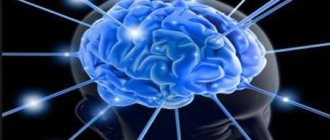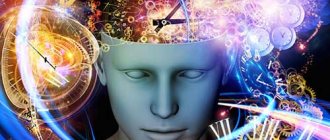How do I know that I'm in pain? The question seems strange: if I feel pain, then I am in pain - that’s all.
For philosophers, as for ordinary people, the very fact of the existence of consciousness is not in doubt. It seems that we can doubt everything, even the existence of the external world - but we cannot doubt the existence of consciousness!
True, there are many pitfalls here. For example, we may be mistaken about the presence of consciousness or argue that consciousness is to some extent not the realm of the obvious and certain. As the famous Oxford philosopher Timothy Williamson says, our confidence that the mind is the home of our knowledge can be shaken.
Does the outside world exist?
In addition to the problem of the existence of consciousness in philosophy, there is also the problem of justifying the existence of an “external” world independent of us: do things exist that do not depend on our perception, does something exist objectively as opposed to subjective? This is an important question, because the entire scientific picture of the world is built on the assumption of the possibility of objective judgment. It seems that there is a parallel between these two problems (consciousness and the world): after all, in both cases there may be an error - we can be mistaken both regarding our inner world and regarding the external one.
The problem of the existence of a world “external” in relation to our consciousness arises like this. We assume that some objects external to consciousness act on our “I”; as a result of this influence, subjective sensations—phenomena—appear. The phenomena themselves are assumed to be some kind of objectively existing given. But let's think about it: after all, these phenomena that we assume in posing the question of the external world are the objects of introspection. It is, of course, possible to ask how these phenomena are given, but the answer is already described in the scheme of the work of the external sense.
In other words, when thinking about the problem of the external world, we doubt where our phenomena came from, but at the same time asking about the existence of these phenomena themselves is absurd: they are simply assumed as data.
It turns out that there is no parallel between the problem of the existence of the external world and the problem of the existence of consciousness. Therefore, consciousness can make mistakes, and skepticism towards it is acceptable, but not at a fundamental level.
With some reservations, we can agree that knowledge about consciousness is the foundation of our knowledge in general. After all, it is impossible to imagine knowledge that is not based on some data. This raw data is, one way or another, the sphere of consciousness.
And if we say that there is no certainty in the question of the existence of human consciousness, then all human knowledge will collapse: this is precisely the channel of our subjective reality through which any knowledge passes. If this channel does not work well, all confidence in the results of knowledge throughout human history crumbles.
You can ask the question differently: why is the impact on the subject generally accompanied by the appearance of some phenomena - sensations and experiences? But this is already an ontological problem, which is called the difficult problem of consciousness. And no one solved it.
Philosophical understanding of consciousness
1. Concept and structure of consciousness.
2. The origin and essence of consciousness.
3. Consciousness and language. The problem of artificial intelligence.
| Concept and structure of consciousness |
Awareness is a complex, multifaceted and multidimensional phenomenon. It is inextricably linked with such a key category of any worldview as man. Solving the problem of consciousness plays a decisive role in understanding the human problem.
Due to its exceptional complexity and versatility, consciousness is a subject of interest from many sciences and non-scientific forms of knowledge. Philosophy, using and generalizing the achievements of various forms of knowledge, focuses its attention on the analysis of such important issues as the essence, origin and structure of consciousness, possibilities and ways of its study. From ancient times to our time, these questions remain controversial and do not have a clear solution.
Idealists defend the idea of the primacy of consciousness in relation to matter, considering it an independent, creative essence (substance) of all things and processes. Dualism (or psychophysiological parallelism) considers consciousness and body as principles independent of each other and does not see the relationship between mental and physiological processes in the body.
In contrast to idealism, materialism proceeds from the fact that matter is primary and consciousness is secondary. In the history of philosophy, materialists, unable to explain the connection between consciousness and inanimate matter, leaned toward hylozoism on the question of the origin of consciousness. Hylozoism (Greek hylе – substance; zoе – life) attributes the ability to sense all matter. “And stones think,” say the hylozoists. Representatives of hylozoism were the ancient Greek materialists. In the Renaissance and Modern times - J. Bruno, French materialists XVIII J. Robinet and D. Diderot. Hylozoism has not disappeared even today. Thus, the modern Western philosopher J. Deleuze believes that things are capable of thinking. W. Benjamin ascribes to things the ability to peer into the world around them, D. Haraway recognizes creative impulses in things, and B. Lautar even talks about the “parliament of things,” endowing them with the right to judge.
Unlike idealism and dualism, materialism views consciousness not as something autonomous, independent of matter, but, on the contrary, as its property. This property - unlike such attributes of matter as movement, space, time - is not universal. It is inherent in a special type of highly organized matter - the human brain. However, it is not the brain as such that realizes and thinks, but the person who has the brain, and the person is in unity with the system - natural, social, cultural - in which he is included as an actively operating element.
Materialism proceeds from the fact that matter exists outside and independently of consciousness, but consciousness does not exist outside of matter. Consciousness is secondary (but not secondary), derived from matter. From a materialistic point of view, the secondary nature of consciousness is considered in three aspects: 1) historical (consciousness as a special property of matter arises at a certain stage of its evolution); 2) psychophysiological (consciousness-function of the human brain); 3) epistemological or epistemological (consciousness is the highest form of reflection of the external world, characterized by meaningfulness and purposefulness).
In modern philosophy and science, instrumentalist, intentionalist and conditionalist programs for the study of consciousness are among the most promising.
Proponents of intentionalism
(from Latin
intentio
- direction) approach reduces consciousness to knowledge, for them consciousness is identical to knowledge. Consciousness, in their opinion, functions as “consciousness about something or someone,” i.e. it is always aimed at certain objects of the world. “The life of consciousness” is considered in relation to the objectivity opposing it, which is rationally comprehended and experienced in the experience of consciousness.
This position was further developed in instrumentalism
: consciousness is a kind of “personal computer”, the functional purpose of which (by analogy with “artificial intelligence”) is the extraction and transformation of information, pattern recognition, calculation and coordination of operations. It is emphasized that all this is extremely important in analysis and planning, management and decision-making in practice, knowledge and communication of people, since any human activity requires cognitive and information support.
Within the framework of conditionalist
(from Latin
conditio
- condition) programs focus on the dependence of consciousness on bodily organization, on the structure and functions of the psyche, the unconscious, communication factors, social environment, culture and human history. These heterogeneous conditions and determinants influence not only directly, but also indirectly (secretly), which very significantly affects the activity of consciousness and the creative potential of the individual. The study of this variety of influences makes it possible to reveal the mechanisms of the unconscious and the nature of their influence on all processes of consciousness.
Each of these programs mentioned is aimed at revealing the deep secrets of consciousness. The most fruitful among them is the position of supporters of conditionalist programs. Conditionalism gives a broader interpretation of consciousness without identifying it with knowledge. The ongoing study of problems of consciousness depending on internal and external conditions and factors of conscious activity allows us to provide a comprehensive approach to understanding the most complex phenomenon of consciousness. The results obtained within the framework of this approach have not only scientific, but also practical significance, primarily for the practice of education. The one-sided focus of education on the rationality of consciousness leads to the creation of an education model that focuses only on the processes of assimilation and use of knowledge. As a result of this, interpersonal relationships and even such intimate manifestations of consciousness as love are built on the basis of rational calculation, which leads to a decrease in the culture of feelings and spiritual and moral degradation of the individual.
Consciousness has a complex internal structure, including various elements and levels of its existence. At the same time, consciousness is a systemic formation, a holistically connected set of sensory, mental, emotional, volitional, mnemonic (memory processes) processes, each of which performs its own functions. This is a holistic process, since all components of consciousness are in natural connections and relationships with each other.
Let us turn to the characteristics of the main elements of the structure of consciousness. These include: sensation, thinking, will, memory, emotions, intuition, attention.
Sensation gives a person a direct reflection of individual external aspects of objects and phenomena.
Thinking is opposed to sensory cognition as an indirect reflection of the internal, essential side of objects and events.
Will —
it is the practical discovery of consciousness. This is not only the ability to desire, but also the ability to act, to carry out what is planned. Will as the force of life, according to F. Nietzsche, asserts itself, while the manifestation of lack of will is an expression of the negation of life.
occupies an extremely important place in the structure of consciousness , as the ability to imprint, store and reproduce information. Thus, memory gives coherence and stability to a person’s life experience and is a necessary prerequisite for the formation of personality.
Emotions —
this is the sphere of personal, subjective psychological experiences (premonitions, joy, delight, anger, fear, love, hatred, sympathy, antipathy). Emotions take on the functions of assessment and choice. Nothing happens in human life without emotional overtones.
Enormous cognitive potential is found in the intuitive ability of human consciousness. Intuition -
This is the ability to directly comprehend the truth by directly observing it without appropriate evidence. The peculiarity of intuitive “vision” (“insight”, “flash”) of consciousness is manifested in the unexpectedness of the solution to the problem, in the unawareness of the ways and means of solving it. This is the sphere of consciousness where spiritual ideals and creative abilities are presented in the form of fantasy, productive imagination.
An important element of consciousness is attention. Thanks to the concentration of attention, the object of interest to us is in the focus of consciousness. Objects and events that influence a person cause not only cognitive thoughts and ideas, but also certain emotions that manifest themselves in excitement, admiration, love, hatred, etc. Some philosophers and, especially, psychologists identify consciousness with attention.
In philosophical literature, there is an established idea of the division of thinking into two main types: reason and reason.
Reason (or common sense) is defined as the lowest level of logical knowledge, based on the ideas and concepts of everyday life; as everyday calculating thinking, oriented towards practical benefit.
Reason is the highest level of logical understanding, a theoretical, philosophically thinking consciousness that operates with broad generalizations and is focused on the deepest knowledge of the truth.
The unity and comprehensive activation of the above and many other mental processes, taking into account the conditions for the formation of consciousness and the nature of its functioning allows us to better understand the nature of man and his consciousness.
| Origin and essence of consciousness |
The problem of the origin of consciousness will remain a mystery for science and philosophy if this problem is not approached historically, without taking into account the fact that consciousness, as a property of matter, arose at a certain stage of its evolution. The history of the emergence of consciousness is one of the components of the general process of development of matter, during which life, all the diversity of living nature, and then a thinking person arises and develops.
Consciousness is the highest form and the result of the development of an important property of matter - reflection. Reflection -
this is a change in one object under the influence of another, or, in other words, the transfer of the characteristics of one object to another in the process of their interaction.
The ability to reflect and its nature depends on the level of organization of matter. Reflection appears in qualitatively different forms in the inorganic world, in the world of plants, animals and, finally, in humans. In the simplest case, reflection in inorganic nature is mechanical deformations, physical and chemical changes that appear as a result of interaction.
With the emergence of life, qualitatively new forms of reflection are formed.
The simplest form of reflection in living nature is
irritability, which is the body’s response to external or internal influences of the environment in the form of excitation.
This form of reflection, which is adaptive in nature, is widespread in plants and protozoa. A higher form of biological reflection, compared to irritability, are reflexes
and
sensations.
Reflexes and sensations appear in animals with a nervous system.
At this stage of evolution, mental forms of reflection arise, characterized by selectivity and activity. A reflex is
a natural reaction of the body to external irritation, carried out with the participation of the central nervous system.
As organisms become more morphologically complex in the process of organic evolution, along with unconditioned
(or innate) reflexes and on their basis,
conditioned
(or acquired) reflexes appear in animals, and higher nervous activity arises.
Further development of the property of reflection inherent in matter occurred among our ancestors under the determining influence of social factors. More precisely, the process of the emergence of consciousness proceeded in unity with the emergence of society. The decisive role in this process of transition from the biological form of movement of matter to the social one belongs to labor activity. It contributed to the formation of abstract thinking and the emergence of higher, purely human forms of reflection.
Consciousness is a specifically human, inextricably linked with the brain, property of highly organized matter to reflect the material world in ideal (subjective) images.
Consciousness
is a set of mental processes that are actively involved in a person’s understanding of the external world and his own existence.
Consciousness is characterized by goal-setting.
Before doing anything, a person does it mentally, in ideal form.
The ideal is
a property of consciousness determined by the social nature of man. It represents a specific way of existence (being) of an object, reflected in the psyche of the subject in sensory and mental images, projects and patterns of activity, spiritual values and ideals.
The ideal is a characteristic of consciousness as the opposite of matter. In this regard, it appears as a subjective reality,
opposed to objective reality. In contrast to the material, which has the properties of thingness, spatiality, and temporality, the ideal denotes non-extension, immateriality, meaningful similarity of the image and the corresponding object.
In other words, consciousness, on the one hand, relies on the material, has it as its prerequisite, and in this respect it is secondary. On the other hand, it is directed towards new material things, becoming objectified and objectified in new results of human activity, and acts in this regard as primary.
Consciousness has a creative, active character. It is aimed at transforming the world and creating a new one.
In this regard, let us turn to the concept of “ consciousness”
"
It characterizes a person and his activities from the point of view of the ability to act and create competently
.
In other words, consciousness is synonymous with the rationality
of human actions. This concept is also used to characterize the historical process. It indicates the presence of a high spiritual component in people’s actions, for example, awareness of the political process, attitude towards nature, etc. On the contrary, the lack of consciousness indicates spontaneity in people’s activities, its unreasonableness. Consciousness is an indicator of how capable people are of carrying out their activities with the help of knowledge about the world around them. The presence of consciousness characterizes a person as a being capable of acting intelligently and creatively.
Individual consciousness
characterized by:
§ activity (reflection of reality in the form of images anticipates a person’s practical actions, giving them a purposeful character); activity manifests itself in selectivity and focus;
§ focus on the subject (intentionality);
§ ability for self-reflection, introspection;
§ varying degrees of clarity: these levels are diagnosed in a person based on his self-reports - from concentration to loss of the subject of thought.
The communicative origin of consciousness determines the ability of mental dialogue with oneself, that is, it leads to the emergence of self-awareness (reflection).
Self-awareness —
This is a special level of consciousness at which the function of monitoring the activity of consciousness and maintaining its integrity is carried out. It involves a person singling out and distinguishing himself, his “I” from everything that surrounds him. This is a person’s ability to look at himself as if from the outside, to become aware of his actions, feelings, thoughts, motives of behavior, interests, and his position in society. It arises not as a spiritual mirror for idle narcissism, but under the influence of certain social conditions that require people to be able to evaluate their actions, words and thoughts from the point of view of certain social norms.
Self-awareness is closely related to the phenomenon of reflection. Reflection -
this is a person’s reflection on himself, when he peers into the innermost depths of his inner spiritual life. Levels of reflection can be varied - from elementary self-awareness to deep reflection on the meaning of one’s existence, its moral content. Understanding his own spiritual processes, a person often critically evaluates the negative aspects of his inner spiritual world, for example, getting rid of bad habits. Knowing himself, he never remains the same as he was before.
The unconscious is a set of mental formations, processes and mechanisms, the functioning and influence of which the subject is not aware of. Many human actions that seem random at first glance are determined by deep motives and complexes that the person himself is not aware of. These motives also manifest themselves in dreams, neurotic symptoms, creative products, etc. Today, there are four classes of manifestations of the unconscious:
1. Unconscious motivators of activity
(motives and semantic attitudes) that are not recognized due to their social unacceptability or discrepancy with other needs, motives and attitudes of the individual. The influence of this kind of motives and attitudes can lead to disturbances in adaptation and mental health of the individual. Correction of these disorders is carried out through psychotherapy, during which the client comes to an awareness of conflicting impulses and gains the opportunity to consciously control them.
2. Unconscious mechanisms
(in particular, mechanisms of a fixed attitude), ensuring the unhindered execution of habitual behavioral automatisms and stereotypes, the application of the subject’s existing skills and abilities in the appropriate situation. The operations underlying them are initially realized; as they are practiced and automated, they cease to be recognized.
3. Superconscious phenomena
(unconscious mechanisms of creative processes, the results of which are recognized as artistic images, scientific discoveries, manifestations of intuition, inspiration, creative insight, etc.).
4. Structures of the social unconscious
— unconscious linguistic, cultural, ideological and other schematisms, myths and social norms that determine the worldview of people belonging to a given culture. Unconscious processes do not require control by consciousness, which allows it to be freed up to perform other tasks. At the same time, the possibility of awareness (but not constant awareness) of the motives driving a person, intrapersonal conflicts and structures of the social unconscious allows a person to rise to a higher level of managing his behavior.
A constructive solution to the problem of consciousness is contained in the theory of S. Freud, in which questions of understanding the unconscious are developed. 3. Freud identified and described the following structural levels of consciousness: conscious, unconscious, subconscious, superconscious.
Conscious
(“I”) – according to Freud – is everything that is more or less ordered within itself and strives to order everything around (logic, reason). The conscious is the sphere of mental life, which is in the focus of consciousness, acts as directly open to the individual, as an actual flowing consciousness. Consciousness at this level processes information sequentially, strives for the unambiguity of its statements and the general validity of their interpretation.
Unconscious
(“It”) is a set of mental phenomena, states and actions that lie outside the sphere of the human mind and are not always accountable to it (eros, thanatos). This is a deep layer of consciousness. The sphere of the unconscious includes instincts from which man, as a biological being, is not free. Instincts give rise to subconscious desires, emotions, and impulses in a person, which manifest themselves in our consciousness in the form of drives, experiences, and affects. Z. Freud saw in the unconscious a source of both creative and destructive tendencies, which subsequently led to an ambiguous interpretation of the principles of his teaching.
Subconscious
- everything that has already been conscious or can become conscious under certain conditions. These are not only automatic, i.e. skills that have ceased to be recognized (for example, the skills of playing a musical instrument, routine work skills), but also social norms that are deeply internalized by the subject and become his conviction, the regulatory function of which is experienced as a “dictation of duty,” “call of the heart,” etc. These are so so-called automatisms and intuitive ideas can be generated with the help of consciousness, but then plunge into the sphere of the unconscious. Examples of automatisms demonstrate the protective function of the subconscious, due to which the load on consciousness is reduced and a person’s creative capabilities are increased.
Superconscious
or “Super-I” (“I-ideal”), Freud believes, is the upper level of the functioning of consciousness, which represents society in the structure of individual spiritual experience - sociocultural attitudes, requirements of public morality, norms of behavior and regulation accepted in society. “Super-I” is the highest authority in the structure of consciousness (mental life), playing the role of an internal censor, conscience. Superconsciousness is a special level of mental activity inherent in creative processes. One of the most important functions of the work of the superconscious is sublimation, that is, the transfer of energy accumulated in the world of instincts into cultural creation and creative activity.
Many philosophers, not without reason, consider consciousness as a gift to man, a miracle of the miracles of the universe. It is noted that consciousness is not only good, but at the same time a cross and a heaviness, for in it all the pain of the world is given. It is no coincidence that in order to relieve pain (mental or physical), consciousness is temporarily turned off with the help of drugs, alcohol, etc.
We know as little about the mechanism of consciousness as our ancestors knew about atmospheric electricity. Until now, scientists cannot give a comprehensive answer, for example, to such a question as: what is intelligence and is it necessary to go beyond the boundaries of our planet to search for it? After all, this property is attributed only to man and is measured only by human standards. However, the possibility of the existence of field life forms, unidentified flying objects (UFOs), poltergeists - require a more in-depth understanding of the existence of the world in general and the essence of consciousness in particular.
| Consciousness and language. The problem of artificial intelligence |
Consciousness is often defined as a person’s knowledge about the world around him and about himself, which, with the help of words, mathematical symbols, and images of works of art, can be transmitted to other people, including other generations in the form of cultural monuments. According to linguists, linguistic form is not only a condition for the transmission of thought, but also a condition for its implementation. People comprehend a thought already formed by linguistic signs. Outside of language, there are only unclear impulses, volitional impulses that result in gestures and facial expressions. Conscious is an event processed by the language system of the brain and formalized by means of language.
Human language is qualitatively different from the “language” of animals (gestures, sounds), which expresses their emotional state, desires, and needs. The “language” of animals is a closed system, strictly limited by an opportunistic attitude towards nature. Human language is an open, self-developing system that reflects the objective world, its properties and relationships, as well as the relationships of people. It enables a person to comprehend the world and his own activities in it.
Of course, a person can express his thoughts and feelings by other, quite diverse means. Thus, the thoughts and feelings of a musician are expressed in sounds, an artist - in drawings and paints, a sculptor - in forms, a designer - in drawings, a mathematician - in formulas, geometric figures, etc. Thoughts and feelings can be expressed in human actions. But we must keep in mind the following: no matter what means thoughts are expressed, they are ultimately translated into verbal language - a universal means among the sign systems used by humans. This special property of language is caused by its connection with thinking.
The closeness of thinking and language, their close relationship leads to the fact that thought receives its adequate (or closest to such) expression in language. A thought that is clear in content and harmonious in form is expressed in intelligible and consistent speech. Let us remember the popular wisdom: “He who thinks clearly speaks clearly.”
The essence of language is expressed in its main functions: nominative
(the ability of language to name things, phenomena – “to give names”);
cognitive (
participation in the process of cognition: we not only speak as we think, but also think as we speak);
informative
(the ability to store, transmit, reproduce information);
communicative
(the ability to communicate at various levels).
Language is the same necessary artificial mediator in a person’s relationship to the world as the instrument of its transformation—technology. A born person until he masters these two main intermediaries - tools and language - does not become a person in the full sense of the word. At the same time, consciousness is not limited to what can be expressed in language and rationally assimilated.
With the advent of computer technology, the problem of consciousness and language turned out to be closely related to the problem of artificial intelligence. The term “intelligence” in philosophy is interpreted as the highest cognitive ability of thinking, which is characterized by a creative, active character in contrast to passively sensory forms of cognition. This term was first used by N.V. Gogol, denoting a person’s ability to know and comprehend something.
Artificial intelligence
is a metaphorical concept to designate a system of means created by people that reproduce certain functions of human thinking.
The priority area for the use of artificial intelligence is computer expert systems. Special disciplines studying the problem of artificial intelligence are initially focused on a comprehensive comprehensive understanding of this problem and are called upon to develop rules for constructing algorithms for the operation of computer equipment that would have the character of a reasonable, purposeful activity. With the help of machines, one can artificially reproduce such a property as thinking, but modeling and possessing this property are fundamentally different things.
If the thinking of animals, their “language”, remains at the level of elementary thinking. Animals have memory; they are characterized by the rudiments of analysis, synthesis and other mental operations carried out at the level of object images, but not concepts. In humans, consciousness is associated with abstract conceptual thinking.
Unlike humans and animals, a machine with so-called “artificial intelligence” operates not with images, but with signs. Here the process of “self-learning” can be carried out (self-learning, self-programming computers or computers). However, this “learning” is of a special kind. The fact that a computer, say, is capable of proving mathematical theorems does not mean that it can also play chess or solve scientific problems and vice versa. Of course, a computer can perform many mental operations, much faster than a human. But completely replace a person. The illusion of “reasonableness” is achieved not only by speed, but also by a successful combination of sequentially and parallelly operating processors that carry out formalized procedures. But still, a computer cannot completely replace a person. And, first of all, because the computer works according to a program put into it by a person, and therefore is in his power.
It should be borne in mind that the problem of artificial intelligence has a centuries-old history. Previously, when creating computing devices, as a rule, they went by simulating the objective actions of a person or his thinking. Currently, work on artificial intelligence is carried out in three main areas:
— reproduction of human creative abilities;
— the use of interactive forms of “communication” between a person and computer systems (translation of formalized texts into natural languages, understanding of natural language by computers);
— creation of robotics, the most important element of which is “artificial intelligence”.
A person with his consciousness and a computer are moving towards each other. Technology is increasingly beginning to act as a partner in human life. Natural intelligence, coupled with “artificial” intelligence, enhances a person’s creative capabilities, confronting him with the need for a new paradigm of thinking that can ensure their unity and integrity in the interests of preserving and further development of humanity.
To summarize, it is advisable to once again emphasize that consciousness is an open system in which there is not only the sphere of the rational, mental, but also the sensual, emotional, and volitional. All components of the structure of consciousness taken together characterize the new possibilities of man as a creative and self-creating being.
***
In the reference literature on the problem of consciousness, see the following articles:
Modern philosophical dictionary. - M.-Beshpek-Ekaterinburg, 1996. Art.: “Consciousness”, “Language”, etc.
New philosophical encyclopedia. In 4 volumes - M., 2001. Art.: “Consciousness”, “Unconscious”, “Artificial Intelligence”.
Philosophical encyclopedic dictionary. — K., 2002. Art.: “Vibrazhennya”, “Idealne”, “Svidomist”, “Mova”, “Piece Intelligence”.
Shrinking before our eyes: how we are mistaken about our consciousness
Let's consider examples of memory errors associated with confabulation or cryptomnesia - conditions in which a person mixes events of the past and present or adds some elements to memories that did not exist in reality. Or Anton Babinski syndrome - caused by neurological damage to the brain, ignoring cognitive deficits, when a person who has lost his sight claims that he can see. But it seems to us that if I have consciousness and claim that I see, then how can I be mistaken in this?
There are psychological experiments that cause mistrust among people despite the fact that they are well verified and have long been confirmed. And this only emphasizes that we do not know ourselves well enough.
The simplest experiment is the Ames room.
Imagine that there is a person sitting in front of you who has not been in this room and has never heard of it, but who understands how perception works. If you tell him: “In this room I am standing opposite you, against the wall. The distance between us is two to three meters. There are no screens or mirrors. I walk along this wall and shrink before your eyes,” then a person may consider you crazy. But when he gets into Ames's room, he will be able to see everything with his own eyes and will not be very surprised.
From this example, one can judge that a person does not understand well how his perception works, and does not fully understand himself. These are just a few examples of the illusions that populate our consciousness, our “inner world.”
Forms and types
In the psychology of consciousness there are different types of perception of reality: adequate and inadequate. An adequate form is called an objective perception of the surrounding world. A person in an adequate state has the ability to speak meaningfully, quickly responds to changes, and easily navigates space.
Inappropriate types of perception:
Unclear - the individual is detached from the world around him and does not react to other people. Doesn't answer questions, or does it slowly, at random
Attention is dulled, movements are slow. Stupor - a person behaves as if he was awakened from a deep sleep. He is inhibited, lethargic, speaks unintelligibly, is not interested in communication, and often looks at one point. Dullness - a person completely withdraws into himself, spending most of his time sleeping
When he wakes up, he cannot understand where he is, he cannot tell what he was doing before he fell asleep. Coma is a state of deep sleep from which a person cannot be awakened. He does not react to sounds, touches, and does not evaluate what is happening. Coma is a medical phenomenon. Doctors cannot find a way to prevent coma and a way out of it. The patient can only wake up on his own; this is impossible to control. Delusion is a distorted perception of reality. A person loses the ability to think adequately and cannot explain his behavior and actions. Hallucinations are intrusive visual and auditory distortions. A person sees and hears something that is not really there. Regular hallucinations give rise to distrust of others, anxiety, and a paranoid state.
Forms of consciousness differ in focus:
- individual - it contains personal characteristics, values, ideas.
- social - includes customs and traditions characteristic of a particular culture;
- theoretical level of social consciousness - connects public ideologies with reality;
- ordinary - responsible for a person’s behavior in ordinary life;
- mass - combines the knowledge of a person as an individual and the component of the crowd.
Types of consciousness in psychology:
- public - formed by society;
- historical - created by the background influence of the common past of humanity;
- political - a view of the world formed under the influence of political sentiments in the country and the world.
Development occurs linearly. You cannot skip a stage of development.
The Immeasurable Triangle: Why You Shouldn’t Be Skeptical
But how then to keep the ground under your feet? How can one claim that the facts of consciousness have any degree of certainty - even despite these errors?
When people in general, or philosophers in particular, become aware of errors about their own consciousness, they can become extremely skeptical. Skeptics might be advised to think about the example of a triangle.
Imagine that there is a triangle in front of you. You might ask, “What are the lengths of the sides of this triangle?” You will begin to measure, but obviously you will not be able to measure accurately. The fact is that physical measurement is an approximate matter: it always has an error. That is, the ruler will only give you the approximate length of the sides.
You can take more and more accurate measurements - but you will still have an approximate (that is, erroneous) result. The triangle will lie in front of you, and you will be powerless to measure its exact parameters.
But you can know
aspect ratio of a triangle if it is rectangular. Why with complete accuracy? Because here we do not measure a specific triangle with a ruler, but use deduction. We know the law of geometry: in a triangle the sum of the angles is 180˚ - this is absolutely accurate. So when you know that one angle is 90˚ and the other two angles are equal to each other, you can tell the absolute value.
You do not suffer either from the fact that you cannot accurately measure the triangle that is in front of you, nor from the fact that you will inevitably make mistakes in calculating the length of its sides. This will not even prevent you from gaining accurate knowledge about it based on the laws of geometry. It's the same here.
Despite these errors, consciousness remains a fairly important foundation of knowledge for us, and we cannot be globally mistaken in its presence and in knowledge about ourselves.
Looking at our own inner world, we are indeed mistaken in many ways and cannot always achieve accurate results. And we can establish some invariants, relationships between our fundamental beliefs, with very great accuracy.
For example, we might ask: what is the relationship between the belief that the external world exists and the belief that every event has a cause? To answer, we need to think about why we believe that some things do not cease to exist after we stop perceiving them. We believe that objects do not disappear as soon as we turn away, when we are sure that there is nothing in the environment of the object that could destroy it. Only if something really threatens its existence do we fully accept its disappearance. So these two beliefs are connected - and we can know
a priori and with absolute accuracy.
Mirror box: we make mistakes not in consciousness, but in interpretation
Consider now the example of the mirror box illusion from a 1963 experiment: a person places a gloved hand in a mirror box and is instructed to draw a line with his hand. Then it turns out that his hand doesn’t seem to obey. And the person not only says: “What is it? What's happening to my hand? - but experiences difficulty in controlling his own limb and makes involuntary movements.
It turns out that in the second phase of the experiment, the subject no longer sees the reflection of his own hand, but of the assistant’s hand. But consciousness still erroneously tells him the wrong information about the location of his hands, although it seems that he cannot be mistaken in this.
All examples of errors about consciousness do not actually relate to the fact of consciousness itself - but rather to the facts behind states of consciousness and to the interpretation of those facts. But the state of consciousness itself is always reliably known to us.
In this sense, introspection is no different from external perception (although there is still a lot of discussion on this topic in modern philosophy). Just as in a dark room you can make mistakes in recognizing this or that object, so in your confused inner world you easily make some errors of perception. You can mix some memories with reality, confuse different experiences into one. The more vague the data, the greater the likelihood of error, both in external and internal feelings.
Another example worth mentioning is the ball-counting experiment testing selective attention. If you haven't tried this experiment yet, watch the following video before reading further.
The subject watches a video of two teams of three wearing white and black T-shirts passing balls to each other. The goal is to count the number of passes the white team has made. As a rule, everyone calls the correct number, but does not see a man in a gorilla suit walking into the middle of the stage during the video.
But we were not mistaken here regarding our own consciousness. We had no attention to this gorilla because it was occupied with another task. We made mistakes in our perception and interpretation of the facts.
Values and their role in human life
Values are the object of a separate philosophical discipline called axiology. It determines the cultural value of individual things depending on how important they are in the formation of special connections between people, how they act as a unifying factor in the process of historical development of society. Values are the embodiment of social solidarity of people; when they are eroded or destroyed, the destruction of the very moral and political core of society is manifested. The consequences of this are the most negative: an increase in crime and lawlessness, an increase in immorality and immoral behavior.
Values exist only in human society; this concept cannot be used in relation to the natural world. They appear only under the influence of the development of human culture and are designed to fill a person’s life with a certain spiritual meaning and significance. The highest level of this meaningfulness is the formation of certain ideals. The simplest division of values involves the separation of such values as spiritual and material.
In spiritual values it is customary to distinguish:
- legal;
- moral;
- religious;
- political;
- aesthetic and other values.
According to another division principle, all values can be divided into:
- individual and public (social);
- actually existing and declared;
- absolute (“values-goals”) and instrumental (“values-means”).
Values are a system of reference points on which a person builds his life. A person himself decides what will be sacred for him and what is unworthy of him, although, of course, his choice is largely influenced by current cultural attitudes. However, how valuable his inner world will be filled depends only on the specific individual. The totality of such highest values ultimately determines the meaning of all human life and reveals the true purpose of man.
The destiny to seek the meaning of one’s life belongs only to value consciousness, capable of high spiritual search and feat.
I'm cold when I'm hot. Antiluminescence argument
Suppose there is a snake lying in front of me - is it an illusion or reality? I may be wrong about this and confuse the snake with a rope. But I cannot confuse the feeling of pain with anything: if I feel pain, then it is there.
In this regard, it is worth discussing the antiluminescence argument of the already mentioned Timothy Williamson.
We are convinced that our states of consciousness are obvious to us - as if they are “highlighted.” For example, if I experience pain, then I know that I am experiencing it and what exactly this sensation is. In other words, if I have some kind of conscious state, then I am always aware of it.
But Williamson has an argument against this "glow" of consciousness. At first glance, this argument is paradoxical and similar in spirit to the famous aporia of Achilles and the tortoise, which is intended to prove the impossibility of movement, although all our experience says the opposite. Williamson suggests imagining that you are cold and gradually getting warmer. Every millisecond the change is so small that you can't register it. If we report from millisecond to millisecond, then every time you will have to say that you are cold, because it is impossible to detect such a slight warming. But at the end of a certain period of time (let's say it's five minutes), the temperature will change so much that you will already feel hot. If I believe that consciousness “glows,” then I will have to assert absurd things: for example, that I am cold when I am hot. Williamson's argument here is much stronger than empirical arguments for the reason that it attacks precisely the very certainty of consciousness.
Explanation for logic lovers
The argument is based on combining two theses:
(1) for all situations in which the subject S is at time t i , it is true that if S feels cold in this state of affairs, then S can know that S is cold
is a statement about the luminescence of consciousness.
(2) for all situations where the subject C is at time t i , it is true that if C can know that he is cold in a situation that takes place at t i , then C is cold in a situation that takes place at t i + 1
- this is the so-called reliability thesis.
The reliability thesis is motivated by Williamson's requirement for knowledge: if something is knowledge, then it must have a reliable basis. If at the moment ti I know that I feel cold, then my knowledge must have a reliable basis. Therefore, at time ti+1, I will still be sure that I am cold, since there is no reason for rejecting this belief: by convention, I cannot notice the minor changes discussed in Williamson's example. And since knowledge is factual - that is, it is associated with the presence of a corresponding fact (since I know that P, therefore P) - it turns out that if in ti I know that I am cold, then in ti+1 I will be cold.
This may seem implausible to you, but consider this: could it be that at t1 you know you are tired, but at t2, which immediately follows t1, you are no longer tired? It seems that such a situation is impossible without some kind of sudden change, but in our example the changes are assumed to be gradual. Note that this reasoning assumes that people's ability to perceive small changes is extremely limited.
In order for the combination of (1) and (2) to give us a false conclusion, we need one more premise:
(3) C is cold at some moment t 0
(beginning of observation).
Then from (1) and (3) we obtain that:
(4) C can find out that C is cold at t0.
From (4) and (2) we get that C is cold in the situation that occurs at t1. Using the same method of reasoning, we find that C is cold at both t2 and t3. So we can easily come to the conclusion that C is cold at tn, which is obviously false, since, according to the description of the example, at the end of the observation, at moment n, C is hot.
It is clear that the error cannot lie in premise (3). Either (1) or (2) can be false. Since (2) is an important part of Williamson's epistemological project, he proposes to abandon (1).
Williamson argues that if we assume that our states of consciousness are indeed luminescent (that is, we always know if we are in some mental state) - then we come to a paradox: we begin to claim that we are cold when in reality it is warm - and all because these changes occur so imperceptibly that we are not able to register them. Williamson says: since we have come to such a paradox, it means that consciousness is still not luminescent, and, being in some kind of conscious state, we are not able to know
.
Leaving aside the logical structure of the argument, we note that Williamson probably has the wrong idea about the workings of consciousness in this argument.
What is the problem?
The first is that when at any point in time we become aware of something, we do so not only in the context of immediately preceding moments (as the philosopher seems to suggest), but also in the context of more distant moments. Therefore, even if we cannot subjectively distinguish the state at moment t1 from the immediately following state at moment t2, then we may well notice the difference between the state at moment t2 and the state at the initial moment t0, from which the experiment began. Because we seem to retain moments of consciousness, we carry out retention, as Husserl said, of an entire time series.
Mental events always have some background, and in constant comparison with it, changes no longer seem tiny - so we can notice them. So Williamson's whole argument falls apart.
Secondly, Williamson argues as if the processes of consciousness are atomistic: as if there are some “atoms” of conscious states that organize the entire flow of consciousness. This statement can also be argued.
Williamson's assumption that I know the state of my consciousness at any moment in time can be seen as dubious. How can I confirm this? Let's return to the example of the invisible gorilla in the selective attention test. Check out the second version of this test:
Half the time, newbies see a gorilla. But even those who know that at some point they need to see a gorilla still miss something. For example, few people can later remember that the red background turns yellow and the captain of the “black” team disappears. Because attention is focused on another task.
But if you think about whether we really do not notice the change in the color of the curtains, the answer will be this: our eyes see them, which means that information about this through the visual neurons enters the brain - but since our attention is occupied by something else, we cannot give a subjective report about it. this information. Williamson's argument is based on the claim that at any given time, if we are conscious, then we must be sensitive to change, but this is not the case.
Third, Williamson links the "glow" of consciousness with the ability to monitor changes. But one can object to him and say that the ability to track changes in the conscious state and the luminescence of consciousness are different things. When I am conscious, it generally really makes itself known to me. But my ability to register the smallest changes does not follow from this property of consciousness to “glow”.
The problem of the emergence of consciousness
The question of how and why consciousness arises is one of the key issues of modern philosophical and scientific knowledge. In one form or another, they intersect with the problem of anthropogenesis, but represent an independent topic of research. The fundamental uniqueness of consciousness condemns researchers to the search for its possible natural foundations, the development of which could become a prerequisite for human thinking. It should be noted that this problem was developed primarily within the framework of the most consistent functional science-oriented strategy.
In modern culture, consciousness is the object of close interest of a number of scientific disciplines, ranging from the physiology of higher nervous activity to psychology, sociology and cybernetics. The variety of scientific versions of consciousness indicates the undoubted complexity and versatility of this phenomenon, the development and functioning of which is determined by the influence of many factors, both natural and social. At the same time, the real experience of consciousness is characterized by a unique integrity, which is given primarily by the integrative nature of the self, self-awareness. Thus, consciousness can be interpreted as a complex multi-level system, including natural-psychic, individual-personal and sociocultural projections. Accordingly, the problem of the genesis of consciousness can be considered at several levels: in the context of natural evolution, in the context of the emergence of culture and society, and also from the point of view of ontogenesis (individual human development).
The natural basis for the emergence of consciousness was the property of reflection, presented in various forms at the level of living and inanimate matter. The emergence of consciousness would be a miracle without the evolution of various forms of reflection in living nature, which is its prehistory. In the course of the development of philosophy and science, it was proven that all matter has a property essentially related to sensations - the property of reflection. This position raised fundamental questions for science about the nature of reflection as an attribute of matter, about consciousness as the highest form of reflection, which is associated with the activity of the human brain.
Reflection characterizes the ability of material objects, in the process of interaction with other objects, to reproduce in their changes some signs and properties of the phenomena acting on them. The nature, content and form of reflection are determined by the level and characteristics of the systemic and structural organization of reflecting objects, as well as how they interact with the reflected phenomena. Outside and independently of interaction, reflection does not exist. The result of the reflection process is manifested in the internal state of the reflecting object and its external reactions.
In the development of reflection theory, two concepts are distinguished: functional and attributive. Proponents of the functional concept argue that inorganic objects have only prerequisites for the property of reflection, but not its active manifestation.
The whole world is an illusion: the inconsistency of the theory of the illusory nature of consciousness
There is such a theory of consciousness as illusionism. This materialist theory argues that our idea of consciousness is flawed precisely because we can make mistakes.
But it can be assumed that the theory of illusionism is only a conceptual confusion. Of course, illusions about the inner world can arise, just as illusions about the outer world can arise. You have confused the rope with a snake - and you have an illusory idea.
But when we say that consciousness is an illusion, then by the word “illusion” we mean something completely different. Theorists who talk about this do not mean our erroneous judgments, but the reality about which we make a judgment. And talking about the illusory nature of consciousness in this sense is the same as talking about the illusory nature of physical data.
If we defend this position to the end, then illusionists should, following Schopenhauer and supporters of the Indian philosophy of Vedanta, say that the whole world is Maya, a great illusion. However, illusionists are not ready to go that far. They believe that physical reality actually exists, and consciousness is illusory. And here they make a serious conceptual miscalculation.
Literature
- Vasiliev V.V.
The difficult problem of consciousness. - M.: Progress-Tradition, 2009. - 272 p. — ISBN 5-89826-316-0. - Priest S.
Theories of consciousness / trans. from English A.F. Gryaznova. — M.: Idea-Press: House of Intellectuals. book., 2000. - 287 p. - Andreeva L.
Ecstatic rituals in the practices of some Russian confessions or altered forms of consciousness // Social sciences and modernity. - 2005. - No. 3. - Morozov E.V.
Evolution of consciousness. Modern science and ancient teachings. - M.: New Acropolis, 2013. - 370 p. — ISBN 978-5-91896-048-6. - Nalimov V.V.
Spontaneity of consciousness. - M., 1989. - Penrose R.
Shadows of the Mind. In search of a science of consciousness. - M.: Izhevsk, 2005. - Rubinstein S. L.
Being and consciousness. - M., 1957 - Spirkin A.G.
Consciousness and self-awareness. - M., 1972 - Shentsev M.V.
Information model of memory. - St. Petersburg, 2005. - Tart Ch.
T. States of Consciousness. — New York, 1975.
Introspection is a mechanism of knowledge about consciousness
By introspection we can understand the ability, thanks to which we recognize the modes of given phenomena. Simply put, it allows us to understand what we are experiencing: a sensory perception of an external object, a figment of our own imagination, or a memory.
Imagine: you see a table. You can be aware not only of the table itself, but also of the process of seeing itself - your inner act. Then you realize that you are standing and seeing the table in reality. But you can recognize a table as a product of the imagination: you don't have a table, and you're wondering what kind of table would look good in your - currently empty - room. Or you can recognize it all as a memory: you once saw the table, and now you remember it. Recognizing exactly how this table appears in your mind is introspection.
In such recognition, of course, errors are possible - as in any intellectual activity. Therefore, we can confidently say about introspection:
- firstly, it contains a rational principle, the ability to judge;
- secondly, the less distinct the phenomena, the higher the likelihood of errors in recognition.
But at the same time, those same invariants using geometric analogies that were mentioned above are quite reliable. That is, one can give a two-fold answer: introspection is reliable in some ways, but not in others.
Thus, we have achieved a certain philosophical optimism regarding our knowledge of consciousness and confidence that we are not globally mistaken regarding its existence. But this philosophical optimism does not at all lead us to psychological optimism.
Forms of human consciousness
Human consciousness has several levels of development and forms of manifestation. Let us consider in more detail the available forms of consciousness. In classical psychology, there are two main forms of consciousness - social consciousness and individual human consciousness.
Definition 1
Social consciousness is the totality of all ideas, views and assessments that are characteristic of a given society at a specific stage of its development.
Individual consciousness is the totality of all ideas, views, feelings that are characteristic of a particular person.










